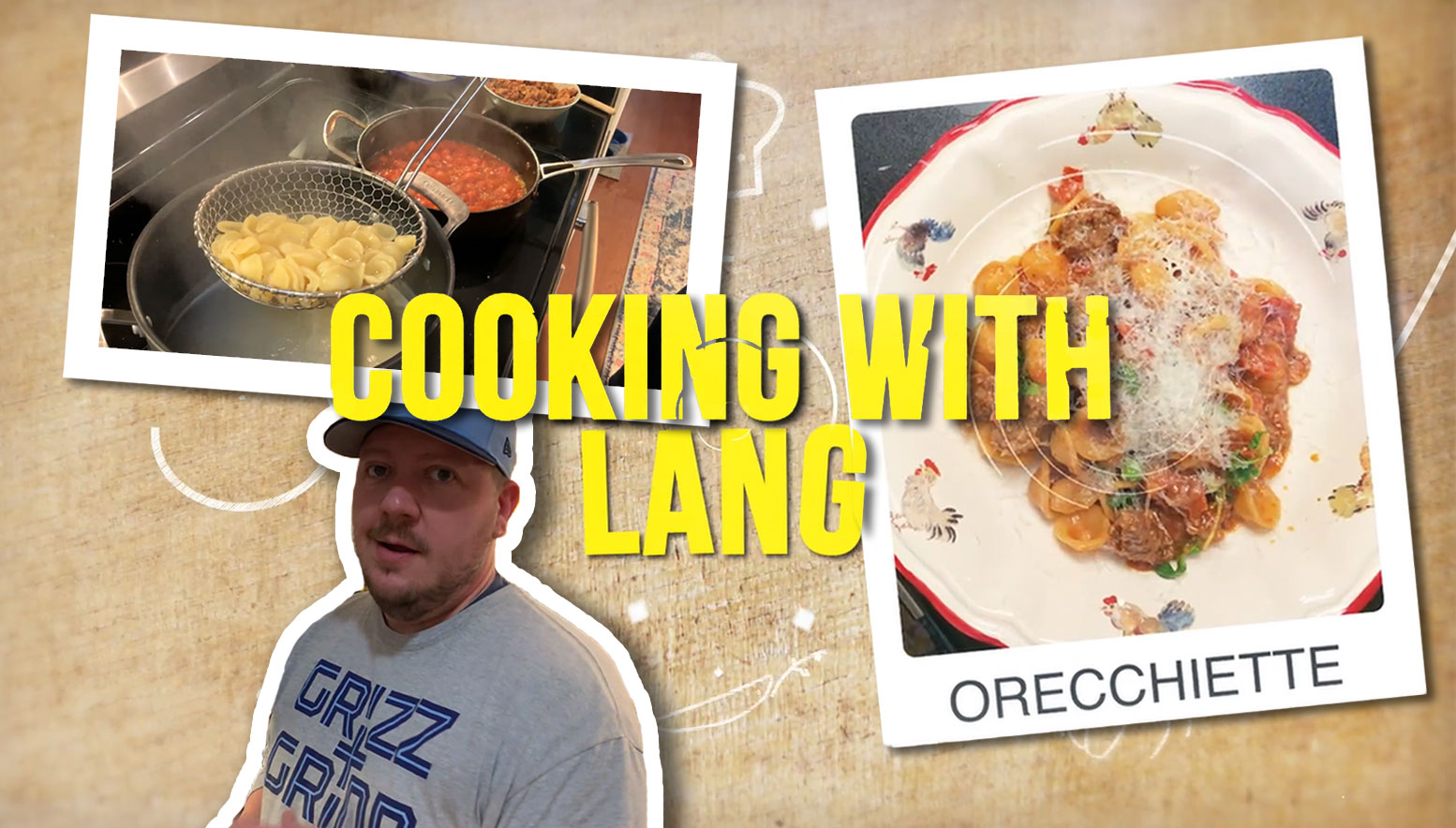
Lang’s World: Cooking with Lang
Lang WhitakerLunchtime came early on Saturday. It wasn’t even noon, and I felt a little hungry, maybe because I’d only had a cup of oatmeal for breakfast. My wife wanted a fried egg for lunch, which I fixed for her. That egg looked delicious, so I decided to riff on it for myself: I poured a glug of olive oil in a small skillet, got it ripping hot, then cracked in an egg. I stood back as it splattered and popped, sprinkled in some salt and pepper, then stuck a couple of slices of bread in the toaster.
Once the egg was brown and crispy around the edges, I flipped it, laid a slice of cheese on top and let that melt a bit, then cut the heat off to make sure the yolk was still runny. I smeared dijon mustard on the toast, put the egg and cheese on top, added a few slices of turkey I found in the fridge, then topped it with another piece of toast.
This was lunch, and it was delicious. I didn’t have a recipe, didn’t have an ingredient list, but I was able to poke around in the fridge and the pantry and put together a really good meal. I made the best of what’s around.
I learned how to cook in drips and drops, pinches and spoonfuls, in scrapes and burns. My mother and grandmother gave me a foundation of cooking, which I left buried for decades. When my wife (then-girlfriend) and I moved to New York City two decades ago, we quickly realized that in our zeal to move to the big town and take it all in, neither of us had considered that it would likely be helpful if at least one member in a household knew how to cook. I’d previously subsisted mainly on fast food takeout, sprinkling in the occasional random fine dining experience. New York City has thousands of great restaurants, and we ordered delivery dinners for our first few months, which was a fine way to go. It was also a fine way for our money and waistlines to go.

And so I decided to learn how to cook. For classes, I turned to the TV, where Food Network and PBS basically run informational cooking programming all day long. I learned to always season my food, how to sear meat before finishing over low heat, how to dice an onion, which herbs go with which proteins, how to make a stock—basically all the basics you’d learn in school or on the job. The internet became my library, as I google recipes and ingredients. I took it seriously, immersing myself in the chance to not only add a skill, but to perfect something. Also, I seemed to have a natural proclivity to it, and I found myself looking forward to cooking each evening, as a sort of treat for myself.
As I soon discovered, knowing how to cook is a skill that is invaluable. Doesn’t matter if I’m at a wilderness campsite or in someone else’s kitchen, the fundamentals of cooking remain the same, a language disparate people can use to communicate. So when my wife and I were on safari in Kenya, I was able to show some Samburu tribesmen how a low, slow roast can transform tomatoes. When we were in Rome, a friend of a friend showed me how guanciale can transform a pasta dish. When we were with friends at a lake house in Arkansas, I was able to cobble together a delicious shrimp and grits dinner out of stuff I found in the freezer and pantry.
After cooking almost every night for a decade, I got pretty good at it. I knew what to do when the pasta sauce was too thick (add water) or how to get a piece of salmon cooked perfectly through in a skillet without burning the outside (sear first, turn heat down, use a lid). I learned what flavors matched, which textures complimented each other. And once you learn all that stuff, the building blocks, then you can play around a bit and start coming up with your own recipes.
Right around this time, I left my gig blogging about the NBA for GQ, to go work for NBA Digital. This meant I could no longer write about the NBA for GQ, but my editor there asked if there was something else I wanted to write about, and I said yes, I wanted to write more about teaching guys how to cook at home. Cooking doesn’t have to be a mystery—I wanted to show people some shortcuts and tricks I’d pick up through the years.
I’ve cranked out dozens of food columns for GQ, and been able to talk with and cook alongside some of the most famous chefs in the world, from Marcus Samuelsson to Jose Andres to Alex Atala to Emeril Lagasse. The chef I admired the most has always been Jacques Pepin, who’s probably best known as Julia Child’s former partner on many PBS cooking shows. When I started learning how to cook, something about Pepin’s approach and demeanor resonated with me, and I turned to his recipes and cookbooks and shows over and over again. His book La Technique, which dropped in the ‘70s, was basically a series of how-to photos not at all dissimilar to a slideshow on the internet today. Want to learn how to cut up a whole chicken? Check out how easy Jacques makes it look.
It took me years to track him down, but just before we moved from New York to Memphis, I was finally able to interview Pepin for GQ, and it was everything I hoped it would be. He was so gracious and genius and generous, and even though he’s in his 80s we split two bottles of wine and ate until we could barely make it to a cab to split home. I came home that night and told my wife I could retire from food writing.
Which is sort of, unintentionally, what happened. Since I’ve moved to Memphis, I’ve been so busy with Grizz Gaming and Grind City Media, that there hasn’t been much time to moonlight elsewhere. I still cook every night, and I try to post pictures occasionally of whatever I’ve made, not as a culinary gauntlet, but more to say, Hey, this cooking stuff isn’t unapproachable. If I can do this, so can you.
Once we learned we were all going to be housebound for a while, I challenged myself to post a post a photo once a day of something I was able to create, using the hashtag #quarandine. Often it isn’t even anything all that special—last night we ate soup and sandwiches—but if you cook it the right way and use the right techniques, you can make things that taste great and maybe even make the times we’re living in a little less stressful. Like everyone else, I’m stuck in my house all day. Why shouldn’t I end the day by putting on some music, pouring something to drink, and finding some zen by dicing a carrot or waiting for water to boil, and trying to make something delicious for my family to eat?
For now, we’re going to be rolling out “Cooking With Lang” videos once a week. Last week we started with a quick pasta dish that’s been in my weeknight rotation for years, and this week I’m going to show you one of my favorite things to make, literally a piece of meat, with salt and pepper, which is perfect. My wife is filming these on my work iPhone. I’m wearing whatever I happened to be wearing when it was time to make dinner. My dog will probably wander through the kitchen occasionally.
Which is to say, these videos won’t be perfect, but please take these videos and make the recipes your own—use a different pasta, add some spice, omit the meats. These recipes aren’t a fixed blueprint so much as they are a set of guidelines, and hopefully you pick up some fundamentals you can put into your toolbox, too.
Let’s eat.
Lang’s World: An Expert’s Tips For Working from Home →
Published on Mar 31, 2020
Related content

